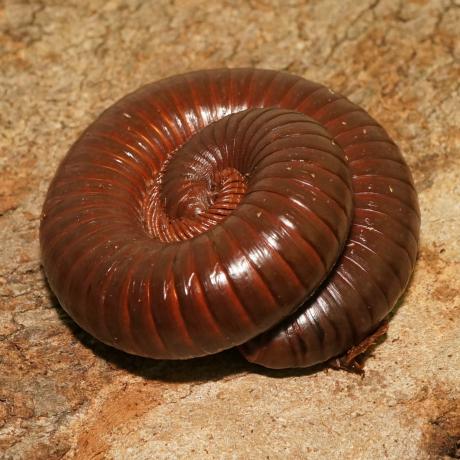

A popular, large and easy to keep species, which is perfect for novice keepers. Also known as African Giant Chocolate Millipedes.
| Origin | Ghana, Nigeria |
|---|---|
| Environment | Dry savannas |
| Adult Size | Up to 25cm |
| Suitability | Novice keeper |
| Food Type | Omnivorous |
A large species of millipede (up to 25cm) which closely resembles Archispirostreptus gigas in its overall appearance. The body, legs and antennae are all reddish to chocolate brown in colour.
Commonly found in areas of dry savanna in Ghana and Nigeria, with distinct rainy and dry seasons.
House singularly or in groups, in large and secure plastic tanks or glass terrariums. This species does really well at higher temperatures of 25°C (77°F) to 30°C (86°F) using appropriate terrarium heating equipment. Ophistreptus quineensis is a very drought-resistant species, but for general keeping, aim to maintain a moderate level of humidity around 70-80% with a moderate level of misting. A hand or pump sprayer is the easiest way to achieve this.
Provide a deep soil based substrate layer of 7-10cm which is enriched with natural organic matter. Add natural decor such as bark and branches for enrichment and cover. Sphagnum moss can also used for helping maintain humidity.
This species is omnivorous and will consume a wide range of fruits, vegetables and animal protein. Place food into a shallow dish and lightly dust in calcium powder. Replace food regularly (preferably daily) to prevent substrate contamination and the attraction of fruit flies. Leaf litter, dead wood and lichen at varying levels of decomposition will also be consumed.